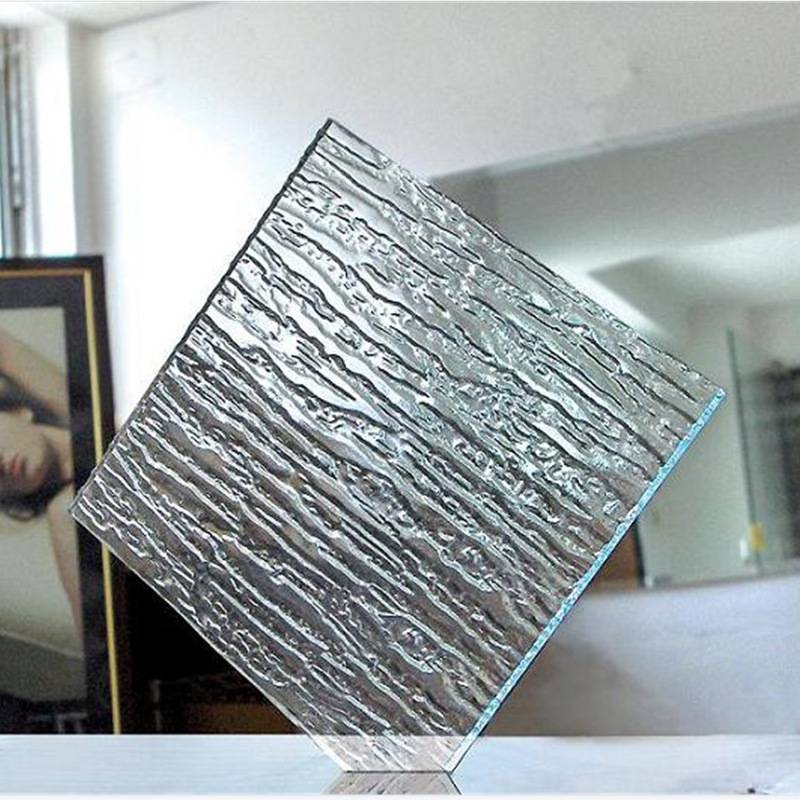The Rise of Green Float Glass A Sustainable Solution for Modern Architecture
In the contemporary world, sustainability and environmental considerations have taken center stage across various industries, including construction and architecture. Among the many innovations aimed at fostering a greener future, green float glass has emerged as a leading material, revolutionizing the way we design and construct buildings. This article delves into the characteristics, production processes, environmental impact, and applications of green float glass.
What is Green Float Glass?
Green float glass is a type of glass that embodies both aesthetic and functional qualities. It is characterized by its distinctive green hue, which is a result of the iron oxide present in the raw materials used during its production. Unlike standard glass that can be clear and colorless, green float glass provides a unique visual appeal while maintaining transparency and clarity.
Production Process
The production of green float glass follows a specific process known as the float glass method, which was invented in the mid-20th century. The process begins with the melting of raw materials, primarily silica sand, soda ash, and limestone, in a furnace at high temperatures exceeding 1,500 degrees Celsius. Once these materials have melted, the resulting molten glass is poured onto a bed of molten tin. The glass floats on the tin, forming a smooth, flat surface, hence the term float glass.
As the glass flows on the tin, it is gradually cooled and solidified, ultimately being cut into sheets of varying thicknesses. The green coloration is retained due to the slight impurities present in the raw materials. This process not only produces high-quality glass but also minimizes defects, making it a preferred material in the construction industry.
Environmental Impact
green float glass
One of the most compelling reasons for the increasing popularity of green float glass is its positive environmental impact. The production process is designed to minimize waste and energy consumption. Additionally, green float glass can be recycled multiple times without losing its quality, contributing to a circular economy.
When used in building façades and windows, green float glass enhances energy efficiency by reducing the need for artificial lighting and regulating indoor temperatures. It can also be combined with other technologies, such as low-emissivity coatings, to further improve energy conservation. By incorporating green float glass into architectural designs, buildings can achieve better energy ratings and contribute to a reduction in carbon footprint.
Applications in Architecture
Green float glass has found diverse applications in modern architecture. Its aesthetic appeal and functionality make it suitable for residential, commercial, and institutional buildings. Architects and designers appreciate its ability to create seamless transitions between indoor and outdoor spaces through large windows and glass walls. This not only enhances natural light but also fosters a connection with the surrounding environment.
Moreover, green float glass is commonly used in the construction of curtain walls, skylights, and partitioning systems. These applications contribute to the overall aesthetics and functionality of a building, making it visually appealing while providing essential benefits, such as insulation and noise reduction.
Conclusion
As the world evolves towards more sustainable practices, the demand for eco-friendly materials like green float glass continues to rise. Its unique combination of aesthetic appeal, functionality, and environmental benefits makes it an ideal choice for modern architecture. From improving energy efficiency to creating beautiful spaces that promote well-being, green float glass serves as a testament to the innovative solutions that drive the architectural landscape of the future.
As we continue to explore ways to reduce our impact on the planet, embracing materials like green float glass is not just an option; it is a necessity for creating a sustainable and aesthetically pleasing built environment. In the coming years, we can expect to see even more creative uses of this versatile material, pushing the boundaries of design while remaining committed to environmental stewardship.
 Afrikaans
Afrikaans  Albanian
Albanian  Amharic
Amharic  Arabic
Arabic  Armenian
Armenian  Azerbaijani
Azerbaijani  Basque
Basque  Belarusian
Belarusian  Bengali
Bengali  Bosnian
Bosnian  Bulgarian
Bulgarian  Catalan
Catalan  Cebuano
Cebuano  Corsican
Corsican  Croatian
Croatian  Czech
Czech  Danish
Danish  Dutch
Dutch  English
English  Esperanto
Esperanto  Estonian
Estonian  Finnish
Finnish  French
French  Frisian
Frisian  Galician
Galician  Georgian
Georgian  German
German  Greek
Greek  Gujarati
Gujarati  Haitian Creole
Haitian Creole  hausa
hausa  hawaiian
hawaiian  Hebrew
Hebrew  Hindi
Hindi  Miao
Miao  Hungarian
Hungarian  Icelandic
Icelandic  igbo
igbo  Indonesian
Indonesian  irish
irish  Italian
Italian  Japanese
Japanese  Javanese
Javanese  Kannada
Kannada  kazakh
kazakh  Khmer
Khmer  Rwandese
Rwandese  Korean
Korean  Kurdish
Kurdish  Kyrgyz
Kyrgyz  Lao
Lao  Latin
Latin  Latvian
Latvian  Lithuanian
Lithuanian  Luxembourgish
Luxembourgish  Macedonian
Macedonian  Malgashi
Malgashi  Malay
Malay  Malayalam
Malayalam  Maltese
Maltese  Maori
Maori  Marathi
Marathi  Mongolian
Mongolian  Myanmar
Myanmar  Nepali
Nepali  Norwegian
Norwegian  Norwegian
Norwegian  Occitan
Occitan  Pashto
Pashto  Persian
Persian  Polish
Polish  Portuguese
Portuguese  Punjabi
Punjabi  Romanian
Romanian  Russian
Russian  Samoan
Samoan  Scottish Gaelic
Scottish Gaelic  Serbian
Serbian  Sesotho
Sesotho  Shona
Shona  Sindhi
Sindhi  Sinhala
Sinhala  Slovak
Slovak  Slovenian
Slovenian  Somali
Somali  Spanish
Spanish  Sundanese
Sundanese  Swahili
Swahili  Swedish
Swedish  Tagalog
Tagalog  Tajik
Tajik  Tamil
Tamil  Tatar
Tatar  Telugu
Telugu  Thai
Thai  Turkish
Turkish  Turkmen
Turkmen  Ukrainian
Ukrainian  Urdu
Urdu  Uighur
Uighur  Uzbek
Uzbek  Vietnamese
Vietnamese  Welsh
Welsh  Bantu
Bantu  Yiddish
Yiddish  Yoruba
Yoruba  Zulu
Zulu 

